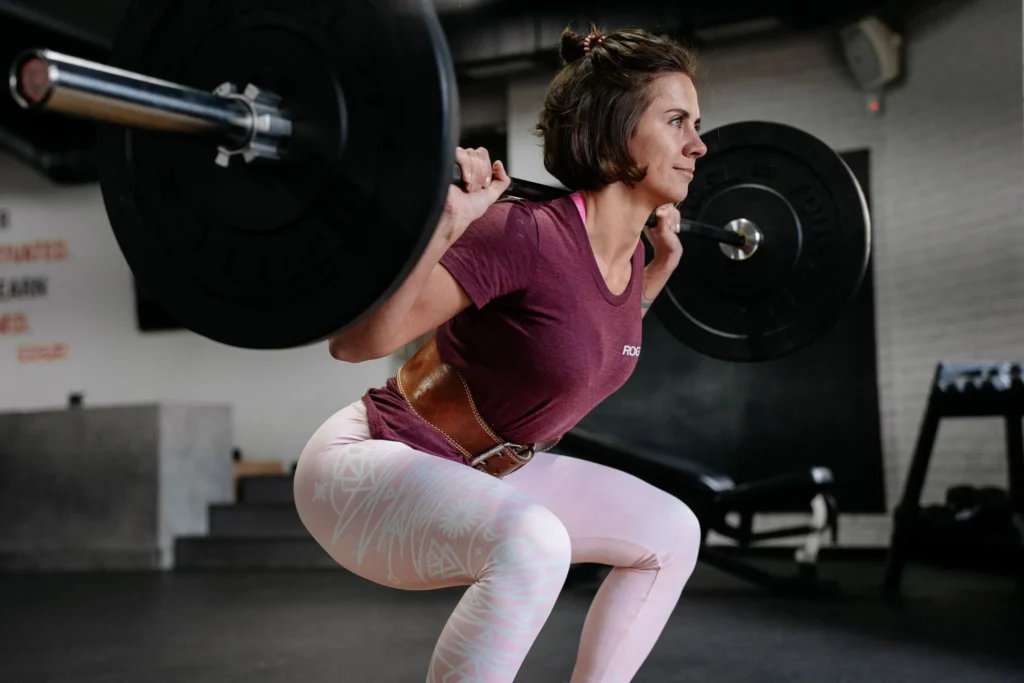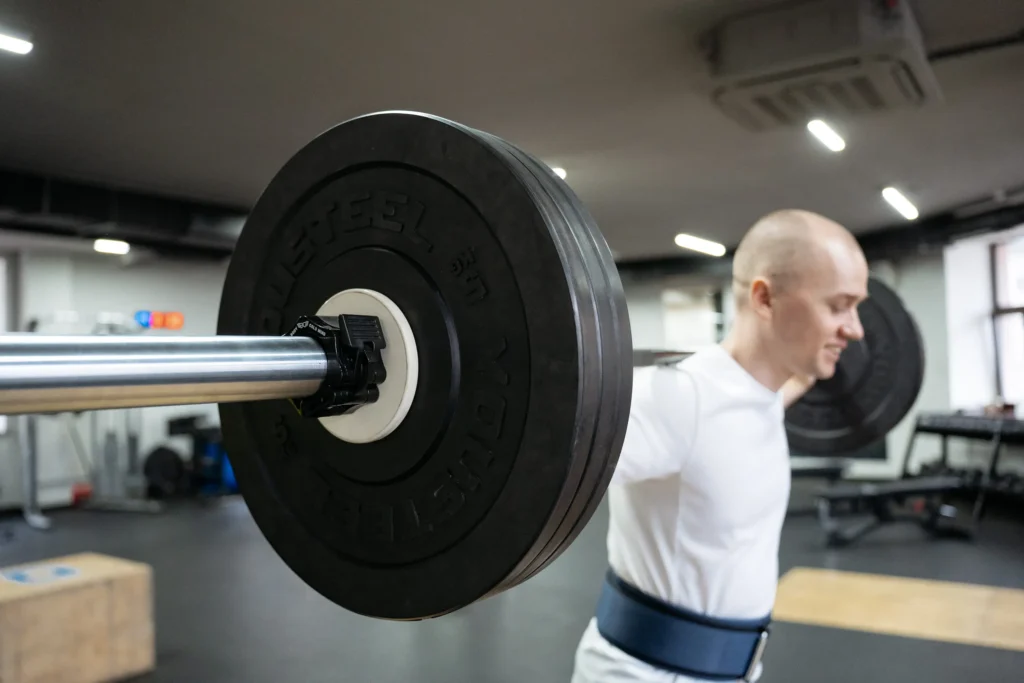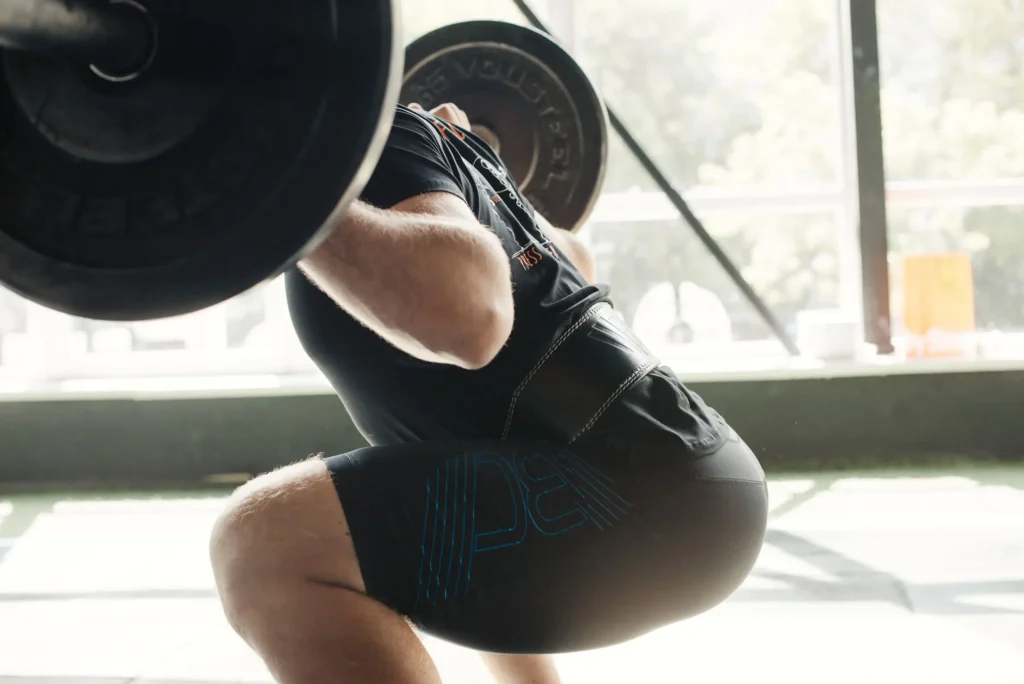Box Jumps
Author:
Unlock your full potential by engaging with our experts and community! Have questions about your fitness journey or looking for expert advice on weightlifting techniques? Don’t hesitate — leave a comment below and Oleksiy Torokhtiy will provide a personalized answer and insights to help you reach your goals.
Torokhtiy is reader-supported. Some links are affiliate links, and we may earn a commission at no extra cost to you. See our disclosure page for details.
What Are Box Jumps?
Box jumps is a plyometric exercise that involves jumping onto a sturdy box or platform from a standing position. The exercise is typically done by starting with both feet on the ground, then explosively jumping onto the box or platform using the legs and hip muscles to propel the body upward.
What are box jumps good for? Box jumps are often used in strength and conditioning programs to improve explosive power, lower body strength, and overall athletic performance. They are commonly used by athletes such as basketball players, sprinters, and football players to improve their jumping ability, speed, and agility.
What Muscles Are Working In Box Jumps?
Box jumps are a compound exercise that works several muscles in the lower body. So here is the muscles worked with box jumps:
Quadriceps: The quadriceps, which are the muscles located in the front of the thigh, are heavily engaged in box jumps. They are responsible for extending the knee joint and straightening the leg during the jump.
Glutes: The glutes, or the muscles in the buttocks, are also heavily involved in box jumps. They are responsible for extending the hip joint and driving the body upward during the jump.
Hamstrings: The hamstrings, which are located on the back of the thigh, are also involved in box jumps. They are responsible for bending the knee joint and flexing the hip joint during the landing.
Calves: The gastrocnemius and soleus muscles in the calves are involved in the push-off phase of the jump and the landing phase, helping to stabilize the ankle joint.
In addition to these lower body muscles, box jumps exercise also engage the core muscles, including the abdominals and lower back, to help stabilize the body during the jump and landing.

How To Perform Box Jumps?
Begin by standing in front of the box with your feet hip-width apart, toes pointing forward. Your arms should be at your sides, ready to swing forward to help generate momentum.
Lower into a quarter squat position, keeping your weight centered over your midfoot and heels. Your knees should be bent at about a 45-degree angle.
Use your arms to help generate momentum as you explosively jump onto the box. Drive your hips forward and extend your legs, pushing off the ground with both feet.
Land on the box with both feet, keeping your knees bent to absorb the impact. Try to land as quietly and softly as possible to reduce the stress on your joints.
Stand up fully on the box, extending your hips and knees, and straightening your legs.
Step down off the box, one foot at a time, returning to the starting position. Alternatively, you can jump down from the box, but this should only be attempted once you have built up sufficient strength and experience.
Repeat the exercise for the desired number of repetitions, aiming for a smooth and controlled movement throughout.
Tips and what do box jumps work:
Always warm up thoroughly before attempting box jumps, including some light cardio and dynamic stretches.
Start with a lower box height and gradually increase as you build strength and confidence.
Use a box or platform that is sturdy and secure, and make sure it can support your body weight.
Land with both feet on the box to reduce the risk of injury.
Avoid rounding your back or leaning too far forward during the jump.
If you experience any pain or discomfort during the exercise, stop immediately and consult a qualified fitness professional.
What Is The Size And Requirements For The Box?
The size and requirements for a box used in box jumps exercise can vary depending on a person’s fitness level, height, and experience with the exercise. However, here are some general guidelines:
1. Size
The height of the box should be challenging but not so high that it causes you to compromise your form or puts you at risk for injury. The recommended height for beginners is usually 12-18 inches, while intermediate and advanced athletes may use boxes up to 24-36 inches tall. Some fitness centers may have adjustable boxes that allow for different height options.
2. Sturdiness
The box must be sturdy and able to support your body weight without wobbling or tipping over. A wooden box or platform is usually the best choice for box jumps as it provides a solid surface for landing and jumping.

3. Surface
The surface of the box should be slip-resistant to prevent your feet from sliding off during the jump. A textured or rubberized surface is ideal.
4. Width And Depth
The box should be wide and deep enough to allow you to land safely with both feet on the box. A standard size for a box is 30 inches in width and depth.
It’s important to note that the above guidelines are general recommendations, and you should always use caution and choose a box height that is appropriate for your fitness level and experience with the exercise. It’s also recommended to start with a lower box height and gradually increase as you build strength and confidence.
What Are Pros And Cons Of Box Jumps?
The box jump workout can be an effective for improving lower body strength, power, and explosiveness, but like any exercise, there are both box jump benefits and cons to consider:
1. Pros:
Full-body workout: Box jumps are a compound exercise that works several major muscle groups, including the quadriceps, glutes, hamstrings, calves, and core.
Improved power and explosiveness: The explosive movement of the jump can help improve power and explosiveness, which can translate to improved performance in other activities and sports.
Increased calorie burn: Box jumps can be a high-intensity exercise that can burn a significant number of calories in a short period of time, making it an effective addition to a weight loss or fat loss program.
Easily adaptable: Box jumps can be easily modified by adjusting the height of the box or incorporating different variations, such as lateral box jumps or single-leg box jumps.
2. Cons:
Risk of injury: Box jumps can be a high-impact exercise that places stress on the joints, especially the knees and ankles. Improper form or using a box that is too high can increase the risk of injury, such as knee or ankle sprains.
Requires a lot of space and equipment: Box jumps require a sturdy box or platform, which may not be readily available at home or in smaller fitness facilities. It also requires a lot of space to perform the exercise safely.
Not suitable for everyone: Box jumps may not be appropriate for individuals with pre-existing joint issues or who are overweight or obese, as the high-impact nature of the exercise can exacerbate these conditions.
Requires a certain level of fitness and experience: Box jumps require a certain level of fitness and experience, and should be approached with caution by beginners or those new to exercise. It’s important to start with a lower box height and gradually increase as you build strength and confidence.
Overall, box jumps can be a beneficial exercise for improving lower body strength and power, but it’s important to approach it with caution, use proper form, and choose a box height that is appropriate for your fitness level and experience.

What Are Key Factors In Box Jump Training?
There are several key factors to consider when training for box jumps:
1. Proper Form
Proper form is essential to performing box jumps safely and effectively. This includes landing softly on the box, using your arms to help generate momentum, and using your hips and legs to jump explosively.
2. Box Height
The height of the box should be appropriate for your fitness level and experience. Beginners should start with a lower box height and gradually increase as they build strength and confidence. Advanced athletes may use higher boxes, but it’s important to always prioritize safety and proper form over height.
3. Plyometric Progression
Plyometric progression involves gradually increasing the difficulty of the exercise by adding variations such as single-leg box jumps or depth jumps. This can help improve power and explosiveness and prevent plateauing.
4. Volume and Intensity
The volume and intensity of box jump training should be appropriate for your fitness level and goals. Too much volume or intensity can increase the risk of injury, while too little may not produce the desired results.
5. Recovery
Proper recovery is essential to prevent injury and allow for optimal muscle growth and adaptation. This includes getting adequate rest and nutrition, as well as incorporating active recovery techniques such as foam rolling or stretching.
6. Safety
Safety should always be a top priority when performing box jumps. This includes using a sturdy box or platform, wearing appropriate footwear, and choosing a safe landing surface.
By focusing on these key factors, you can effectively train for box jumps and improve lower body strength, power, and explosiveness while minimizing the risk of injury.
What Are Main Mistakes In Box Jump Training?
There are several common mistakes to avoid when training for box jumps:
1. Starting With Too High Of A Box Height
Starting with a box height that is too high can increase the risk of injury and prevent you from properly executing the exercise. It’s important to start with a lower box height and gradually increase as you build strength and confidence.
2. Neglecting Proper Form
Proper form is essential to performing box jumps safely and effectively. This includes landing softly on the box, using your arms to help generate momentum, and using your hips and legs to jump explosively. Neglecting proper form can increase the risk of injury and prevent you from achieving optimal results.
3. Overtraining
Overtraining can increase the risk of injury and prevent you from achieving optimal results. It’s important to give your body time to rest and recover between workouts and to avoid excessive volume or intensity.
4. Not Progressing The Exercise
Plyometric progression involves gradually increasing the difficulty of the exercise by adding variations such as single-leg box jumps or depth jumps. Not progressing the exercise can prevent you from achieving optimal results and lead to plateauing.
5. Neglecting Recovery
Proper recovery is essential to prevent injury and allow for optimal muscle growth and adaptation. Neglecting recovery can increase the risk of injury and prevent you from achieving optimal results.
6. Choosing An Unsafe Landing Surface
Choosing an unsafe landing surface, such as a hard or uneven surface, can increase the risk of injury. It’s important to choose a safe and sturdy landing surface to perform box jumps.
What Are Box Jump Variations?
There are several variations of box jumps that can add variety to your workouts and help you progress in your training:
1. Single-Leg Box Jumps
Single-leg box jumps involve jumping onto the box with one leg instead of two. This variation can increase the difficulty of the exercise and improve balance and stability.
2. Depth Jumps
Depth jumps involve stepping off a box or platform and immediately jumping onto a lower box. This variation can improve explosiveness and power.
3. Box Step-Ups
Box step-ups involve stepping onto the box with one foot and then bringing the other foot up to meet it. This variation can be a good starting point for beginners or those recovering from injury.
4. Lateral Box Jumps
Lateral box jumps involve jumping laterally onto the box from the side. This variation can improve lateral explosiveness and agility.
5. Box Jump Overs
Box jump overs involve jumping over the box from one side to the other. This variation can improve overall explosiveness and agility.
6. Weighted Box Jumps
Weighted box jumps involve holding a weight, such as a dumbbell or weighted vest, while performing box jumps. This variation can increase the difficulty of the exercise and improve overall strength.
By incorporating these variations into your workouts, you can add variety to your training and improve your overall performance in box jumps and other explosive movements.
Box Jump Alternatives
If you’re looking for alternatives to box jumps, there are several exercises that can provide similar benefits:
1. Broad Jumps
Broad jumps involve jumping as far as possible in a horizontal direction. This exercise can improve lower body explosiveness and power.
2. Jump Squats
Jump squats involve squatting down and then jumping explosively into the air. This exercise can improve lower body strength, power, and explosiveness.
3. Plyometric Lunges
Plyometric lunges involve alternating jumping lunges. This exercise can improve lower body explosiveness and agility.
4. Bulgarian Split Squats
Bulgarian split squats involve standing in a split stance with one foot on a box or platform behind you and then lowering into a lunge. This exercise can improve lower body strength and stability.
5. Hill Sprints
Hill sprints involve sprinting up a hill as fast as possible. This exercise can improve lower body explosiveness, power, and endurance.
By incorporating these exercises into your workouts, you can improve lower body strength, power, and explosiveness without necessarily requiring a box or platform.
Also read:
Why Trust Us?
With over 20 years in Olympic weightlifting, strength training, nutrition coaching, and general fitness our team does its best to provide the audience with ultimate support and meet the needs and requirements of advanced athletes and professional lifters, as well as people who strive to open new opportunities and develop their physical capabilities with us.
By trusting the recommendations of our certified experts in coaching, nutrition, and sports training programming, as well as scientific consultants, and physiotherapists, we provide you with thorough, well-considered, and scientifically proven content. All the information given in the articles concerning workout programming, separate exercises, and athletic performance, in general, is based on verified data.
The product testing process is described in more detail here.
Author: Oleksiy Torokhtiy
Olympic Weightlifting Champion, PhD in Sport Science
Best Results: Snatch – 200 kg,
C&J – 240 kg
Oleksiy Torokhtiy is a professional athlete boasting 20 years of experience in Olympic weightlifting. With multiple European and World titles under his belt, he has showcased his prowess in two Olympic Games (Beijing 2008 and London 2012). Upon concluding his illustrious career, Oleksiy dedicated himself to coaching. By 2022, he had conducted over 200 weightlifting seminars worldwide. He is the visionary behind an international sportswear and accessories brand known for its motto, “Warm Body Cold Mind.” Additionally, he is an esteemed author and the creator of a series of training programs and eBooks.



Still have questions after reading our article? Unlock your full potential by engaging with our experts and community! Don’t hesitate — leave a comment below and Oleksiy Torokhtiy will provide a personalized answer and insights to help you reach your goals.